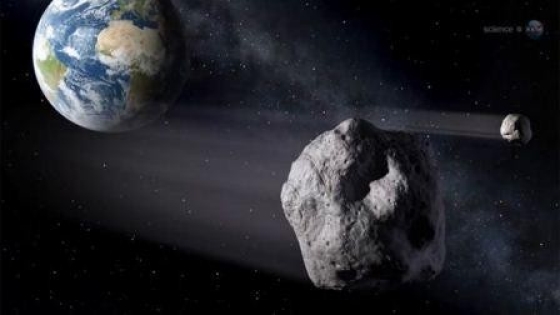Asteroid close encounter but no crash likely, professor says
Asteroid 2012 DA14 whizzed by Earth on Friday, Feb. 15, coming within 17,100 miles of our planet. That's a close call by astronomical standards, raising concerns in some quarters of an asteroid strike in the future.
While it's possible, says Rhett Herman, professor of physics at Radford University, the chances of an asteroid smacking into Earth are remote. Why? "It's really, really hard to hit things in space," Herman says.
As simplistic as that answer is, Herman backs his claim with math. The professor explains:
"Here's the 'target size' of Earth: pi*r^2=pi*(12,750km)^2=5.11E8km^2.
"Here’s the size of the solar system out as far as Pluto: pi*(5.984E9km)^2=1.12E20km^2.
"Here’s the ratio: 5.11E8/1.12E20=4.6E-12-0.000 000 000 004 6." (And yes, that’s 11 zeroes between the decimal point and the 46.) "In other words, space is really, really, really, really empty, even in our relatively crowded solar system."
Herman also downplays the possibility that Earth's gravity could "suck in" an asteroid.
"Without Earth’s gravity, the asteroid would have to 'aim' right at Earth to hit us—it would have to hit a circular 'target' of area pi*r^2 where 'r' is Earth’s radius. With Earth’s gravity added in, that 'target' grows, but it depends on the speed of the object."
The faster an object moves, the less that target size actually grows, the professor notes. "In the case of asteroid DA 2012, this means the target size of Earth is just a few percent bigger than it is, based on its size. It's going to miss us quite comfortably."

This image from NASA depicts the asteroid in relatively close proximity to Earth.